Last weeks’ round -up;
15-26 November 2021
Good Machine Learning Practice (GMLP) – Guiding Principles
As the artificial intelligence and machine learning medical device field evolves, so too must best practice in Good Machine Learning Practice (GMLP). Through regulatory collaboration between the U.S. FDA, Health Canada, and the MHRA, 10 guiding principles have been identified which should be addressed when medical devices use artificial intelligence and machine learning software. These 10 guiding principles, which address the unique nature of these products are intended to lay the foundation for developing GMLP, in addition to the promotion of safe, effective, and high-quality medical devices that use artificial intelligence and machine learning.
For more detailed information about these principles please see https://lnkd.in/dvEUQE_4
Updated mitigation strategies to reduce the risk of nitrosamine drug substance-related impurities in drug products
The FDA has received reports of certain types of nitrosamine impurities that formed in several drug products. These nitrosamines share structural similarities to the active ingredient and are therefore referred to as drug substance-related impurities (NDSRIs). NDSRIs may be generated during manufacturing or during the shelf-life storage period of the drug product. NDSRI formation has also been attributed to nitrite impurities present in commonly used excipients, including water, at parts-per-million amounts. Manufacturers are expected to use the three-step mitigation strategy described in the FDA’s guidance (Control of Nitrosamine Impurities in Human Drugs) to determine the presence of nitrosamines, including NDSRIs in their drug products. The Agency is encouraging applicants to develop control strategies and/or design approaches to reduce NDSRIs to acceptable levels if unacceptable levels are detected. One mitigation strategy described in the guidance includes a supplier qualification program for potential nitrite impurities across excipient suppliers and excipient lots to reduce the risk of nitrosamine formation in the drug product.Other possible mitigation strategies are also described in the FDA article linked below.
https://bit.ly/RealCMC-3xoZ8KE
CMDh meeting: Ph. Eur. finished product monographs / EMA
The CMDh has published the minutes for the meeting held between the 12th and 14th October 2021. During the meeting the QWP responses to the CMDh questions on Ph. Eur. Medicinal Product Monographs (MPMs) were presented. The QWP has advised that, in principle, already authorised products for which a Ph. Eur. MPM is official should comply with the requirements described in the monograph, unless otherwise described in the General Notices of the Ph. Eur. If the MPM is official before a generic product is approved, the generic product has to comply with the requirements described in the monograph. However, if the generic product is approved before the MPM is developed, the MPM should have been developed to embrace the quality of all approved medicinal products. If this has not been the case and the generic product specification is wider than the range described in the MPM, this should be communicated to the National Pharmacopoeia Authority and EDQM to be considered for inclusion in a revised monograph. Several other scenarios are also described in Section 3.9 of the meeting minutes below.
https://bit.ly/RealCMC-3nCZjP8 (more…)
Last week’s round -up;
15-19 February 2021
MHRA has updated their guidance on managing CTs during this pandemic
The guidance now includes a section on “Management of COVID-19 vaccine deployment for ongoing non-COVID-19 clinical trials”. The Sponsor should conduct a specific risk assessment for concomitant use of a COVID-19 vaccine for each IMP and with specific consideration for the trial population. Some trials may also need to consider risk assessment for non-IMPs and/or combinations.
Details in full can be found here: https://lnkd.in/ebfYpNS#IMP
CMDh revised MRP/DCP guidance
The CMDh has released the following revised MRP/DCP and national procedure guidance:
• Requirements on Submissions (number and format) for New Marketing Authorisation Applications within MRP, DCP and National Procedures (tracked).
• Requirements on submissions (number and format) for Variations and Renewals within MRP and National Procedures (tracked).
• CMDh annotated QRD template for MR/DC procedures (tracked).
https://bit.ly/RealCMC-3pEBUed
UK MHRA has updated the fees payable to the MHRA for 2020 to 2021
Update the MHRA fees for marketing authorisations and variations now include the new national procedures following exit from the EU, and the new UK “Orphan Marketing Products” fees, available at the following link: https://www.gov.uk/government/publications/mhra-fees?utm_medium=email&utm_campaign=govuk-notifications&utm_source=508f632b-1ef5-4107-9b4e-1e517df8d2e5&utm_content=daily
UK MHRA has updated some medical device guidance
Guidance on applying human factors to medical devices – The updates are primarily around this guidance applying to Great Britain, changes in references to legislation and the introduction of the new UKCA mark. https://lnkd.in/eFUrS3C Assistive technology: definitions, examples and safe use – Updates include a new section on the regulations in Northern Ireland. https://lnkd.in/ecvbrYm Medical device safety information produced by the MHRA – The MHRA publishes National Patient Safety Alerts (NatPSA) for medical devices and medicines. When an issue does not meet the criteria for a NatPSA, but still needs to be broadcast, MHRA may issue a different type of communication, such as the MHRA device safety information (which if targeted to you requires a response) and manufacturers’ field safety notices (FSNs). https://lnkd.in/en73gfq
EMA timetable for AA of full MAAs for ATMPs
EMA has published a new timetable for Initial (full) MAA under accelerated assessment for ATMPs.
Here is a link to the document: https://lnkd.in/enq9rEa
(more…)
Last week’s round -up;
23 -27 November 2020
Updated Ph.Eur. vaccine package to support COVID-19 vaccine development
The EDQM has released an updated set of Ph.Eur. quality standards for vaccines to help support COVID-19 vaccine developers in designing appropriate analytical strategies for candidate vaccines and to ensure their quality and safety. The Ph.Eur. package now includes an additional 17 texts on analytical methods which are referenced in the recently released EDQM text on recombinant viral vectored vaccines for human use but may also be relevant for COVID-19 vaccines based on other technologies. The updated Ph. Eur. vaccines package is available for free from the EDQM website.
https://bit.ly/RealCMC-2V7cZ5X
New and revised FDA product-specific guidances
The FDA has released 13 new and 21 revised draft product-specific guidances, which are aimed at promoting generic competition by clarifying the agency’s expectations for bioequivalence studies. Eleven of the new and revised guidances concern complex products, such as metered dose inhalers or aerosol foams, and 24 of the guidances concern products without any approved generic competition.
https://bit.ly/RealCMC-2J8zaGd
CMDh updates – November 2020
The CMDh has updated the following guidance related to MRP, DCP and National Procedures: · Requirements on Submissions (number and format) for New Marketing Authorisation Applications within MRP, DCP and National Procedures (with tracked changes). · Requirements on submissions (number and format) for Variations and Renewals within MRP and National Procedures (with tracked changes).
https://bit.ly/RealCMC-399ZcDX
Revised Lapatinib product-specific bioequivalence guidance
The EMA has revised its draft product-specific bioequivalence guidance for Lapatinib 250 mg film-coated tablets. The draft guidance was significantly revised following feedback from the first public consultation, and it is open for a second public consultation until the 31st January 2021.
https://bit.ly/2ZOgRuu
(more…)
Last week’s round-up;
26 – 30 October 2020
New FDA Guidance on Referencing Approved Drug Products in ANDA Submissions
The US FDA has published a ‘Referencing Approved Drug Products in ANDA Submissions Guidance for Industry’. The guidance provides some clarifications to potential applicants who wish to seek approval for generic medicines on how to identify a reference listed drug (RLD), a reference standard, and the basis of submission in an ANDA submission. The FDA also provides recommendations on how applicants can accurately use these terms in an ANDA, how applicants can request FDA designation of an RLD, and how FDA selection of a reference standard may be requested. The recommendations in the document are nonbinding.
http://bit.ly/RealCMC-34EFvBs
EMA’s implementation plan to address nitrosamine impurities
The EMA has released its full plan to implement recommendations to reduce the risk of nitrosamine contamination in medicines. The Agency’s plan specifies the short-, medium- and long-range priorities. The plan is based on the June 2020 “lessons learned” report from the European Medicines Regulatory Network on the problem of pharmaceutical contamination with nitrosamine impurities. It includes 40 separate recommendations and corresponding actions from the report and for each recommendation the plan identifies a lead agency, other involved parties and a timeline. The EMA’s plan also recommends that assessors are appropriately trained to ensure that the recommendations concerned are implemented in the review of MA or variation applications. A detailed question-and-answer document is also in the pipeline within the next 12 months and will provide information about potential sources of nitrosamine impurities, as well as other substances of concern.
http://bit.ly/RealCMC-3e7vf7X
EMA issues a reflection paper on development of Medicines for use in older populations
The email has issued a new and most interesting reflection paper on the development of Medicines for use in older populations.It is interesting from the perspective that whilst the main audience of the envisaged new guidance is the medicines developers, the concepts may too be of interest to other stakeholders such as physicians, pharmacists and patients because of topics such as patient adherence, medication safety and practical medication problems. Rather than focusing solely on chronological age, it states it is more important to focus on biological age of the patient. Therefore, the paper recommends to take a patient-centric approach to pharmaceutical development as the model approach. In addition, companies are encouraged to seek scientific advice in order to design, from the beginning, a medicine portfolio that takes into account as much as possible, the disease, disease setting and the needs of any patient, including older people with comorbidities and polypharmacy.
The paper in full can be accessed via this link: https://lnkd.in/eb4HC9z
MHRA UK and EU Transition: new rules for 2021
There are some recent updates on the MHRA site, regarding new assessment routes, procedures for PIPs, conversion of Centrally Authorised Products to GB Marketing Authorisations (as communicated with Marketing Authorisation Holders), and also a change regarding Falsified Medicines Directive. Please note that although MHRA has been publishing some guidance, they have also been busy updating all guidances. However, a number are being held subject to agreement between the parties currently negotiating the final deal between UK and EU. It was due to happen by mid-Oct, which is why they planned a series of webinars on various topics which are being run at present. Indeed, MHRA also plans to tweak the guidances again from questions arising from the various webinars.
A link to the area of interest with the above and other links can be found here https://lnkd.in/gwiGBAZ
CMDh updates – October 2020
The CMDh has revised the following guidance and forms:
• Revised best practice guides for the processing of Type IA and Type IB notifications in the mutual recognition procedure (tracked).
• Revised examples for acceptable and not acceptable groupings for MRP/DCP products document (tracked). A new example of variations involving changes to related substances specifications that are acceptable as single changes rather than as a grouping is included.
• An updated assessment report template for the repeat use procedure.
• Revised Q&A – Pharmacovigilance Legislation (tracked). Question “2. How should I submit a new RMP or an updated RMP to update my dossier?” has been updated.
• Revision 3 of the EU ASMF number request form, as well as contact points for submitting the request.
https://bit.ly/RealCMC-2J29kDE
(more…)
Last week’s round-up;
28 September – 02 October 2020
Revised Ph. Eur. dosage form monographs on patches and medicated plasters
The Ph. Eur. commission has adopted the following revised dosage form monographs on transdermal patches, cutaneous patches and medicated plasters:
-
- A new version of Patches (1011) – The monograph now covers both cutaneous and transdermal patches since they have similar manufacturing and quality control requirements.
- General chapter 2.9.4 Dissolution test for transdermal patches – This has been revised to ensure that it applies to both cutaneous and transdermal patches.
- A new Plasters, medicated (3032) monograph.
The revised chapters will be published in Ph. Eur. Supplement 10.5 by the 1st January 2021 and should be implemented by the 1st July 2021.
https://bit.ly/RealCMC-3jsJGFy
EU CTFG Contraception Guidance updated on 21 September 2020
The EU Clinical Trials Facilitation and Coordination Group Recommendations related to contraception and pregnancy testing in clinical trials was updated to Version 1.1 on 21 September 2020. The changes are as follows:
After the relevant systemic exposure to the medicinal product has ended for exposure to other types of genotoxicants than aneugenic compounds, the duration for applying highly effective contraception measures for women of childbearing potential, has been extended from 1 month to 6 months (one folliculogenesis cycle). The need for informing participants to seek advice about donation and cryopreservation of germ cells in line with this guidance prior treatment if applicable, has been added to the section on the need for sexual counseling of study subjects, e.g. in adolescents, which should be reflected in the protocol.
The new guidance can be found at: https://lnkd.in/eC665iq
EMA: Workshop on support for Orphan Medicines Development on 9th Nov 2020.
EMA has announced an upcoming virtual workshop which aims to encourage early and efficient dialogue with the regulators for support with medicines development in rare diseases. The existing processes like orphan designation, protocol assistance and PRIME scheme will be highlighted and explained in the context of early product development strategy. There will be scope too for the sharing of views on early medicines development.
Further information, including an agenda can be found here: https://lnkd.in/esfRxsZ.
CMDh meeting report – September 2020
A report from the CMDh meeting held on the 15th-16th September 2020 has been published. Some of the topics covered during the meeting include:
-
- The endorsing of the use of dexamethasone in COVID-19 patients on oxygen or mechanical ventilation by the EMA.
- The implementation deadline of the updated excipients guideline.
- A minor update of the Practical Guidance for MAHs of nationally authorised products (incl. MRP/DCP) in relation to the Art. 5(3) referral on nitrosamines and an update on nitrosamines in medicines containing metformin was also discussed.
- Brexit.
- CMDh positions following PSUSA procedures for nationally authorised products only.
- MRP/DCP statistics in the first semester of 2020.
- The adoption of an updated guidance document with the timetables for requests for recommendations on the classification of unforeseen variations by national competent authorities in 2021, and an updated guidance document with the timetables for MRP/DCP applications referred to the CMDh for the 60-days referral procedure in 2021.
The full list of topics discussed during the meeting may be viewed at the following link : http://bit.ly/RealCMC-3jkPn8m
FDA issues cannabidiol bioequivalence guidance for generics
The FDA has released draft product-specific bioequivalence guidance for generic cannabidiol oral solution. The guidance follows the approval of cannabidiol oral solution to treat seizures associated with two rare and serious types of childhood epilepsy and to treat a third seizure condition, tuberous sclerosis complex. The guidance states that generic cannabidiol oral solution 100mg/mL should not contain more than 0.10% tetrahydrocannabinol by weight, and it must have “the same active drug ingredient in the same concentration and dosage form as the reference listed drug” in order to qualify for a biowaiver. The draft guidance is open for public consultation for 60 days following its publication in the Federal Register on the 22nd September 2020.
More information on the contents of the guidance document may be viewed here: http://bit.ly/RealCMC-3jdrQpL
Ph. Eur. monographs for public consultation
Two draft monographs have been published in Pharmeuropa 32(4) and are available for comment until December 31, 2020:
-
- A new draft monograph on implementation of pharmacopoeial procedures. This document provides guidance on setting up an approach for implementation of analytical procedures found in Ph. Eur. monographs.
- A revised monograph on rectal preparations (tracked document).
http://bit.ly/RealCMC-2EK9P3G
(more…)
August 2020
RRL Regulatory Tips and Insights
Since the beginning of August 2020, we have published weekly Regulatory tips and insights from our Regulatory experts on our Real Regulatory LinkedIn page, as a service to our followers. The tips we published in August 2020 are collected here, for convenience. Make sure you follow Real Regulatory Ltd and Real CMC for regulatory news, reports and hints.
Validation Checklists
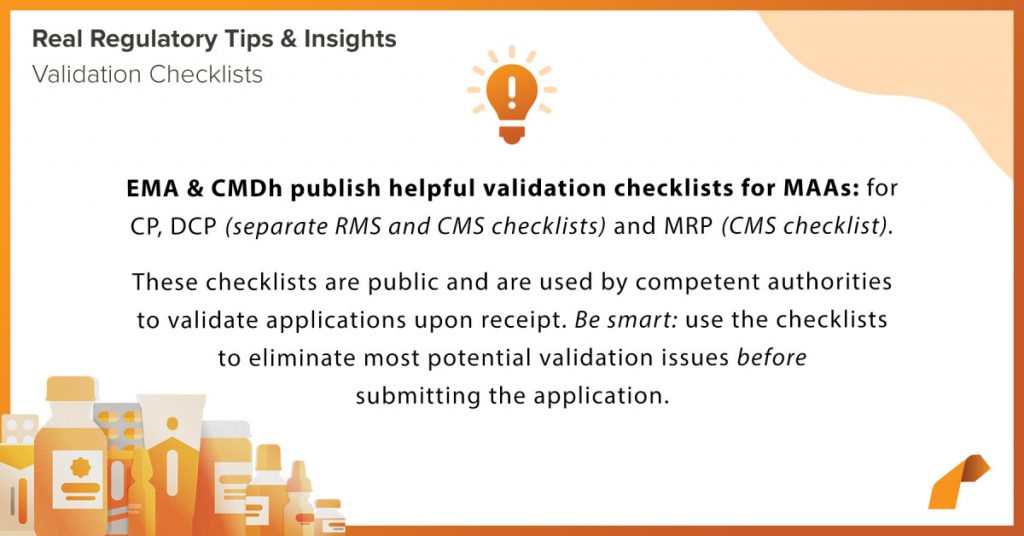
PSUR Submission Deadline
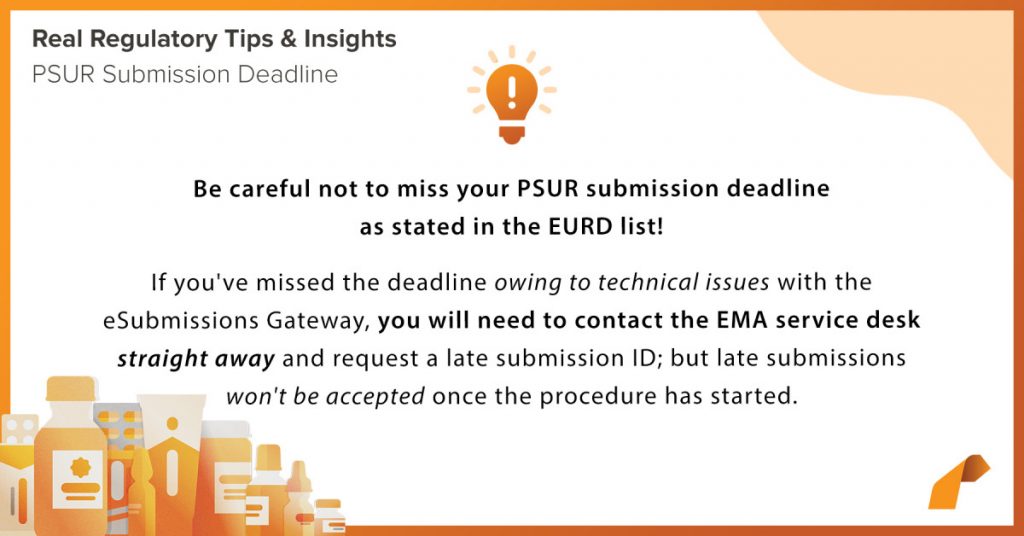
EU Paediatric Investigation Plan or PIP Wavier Request
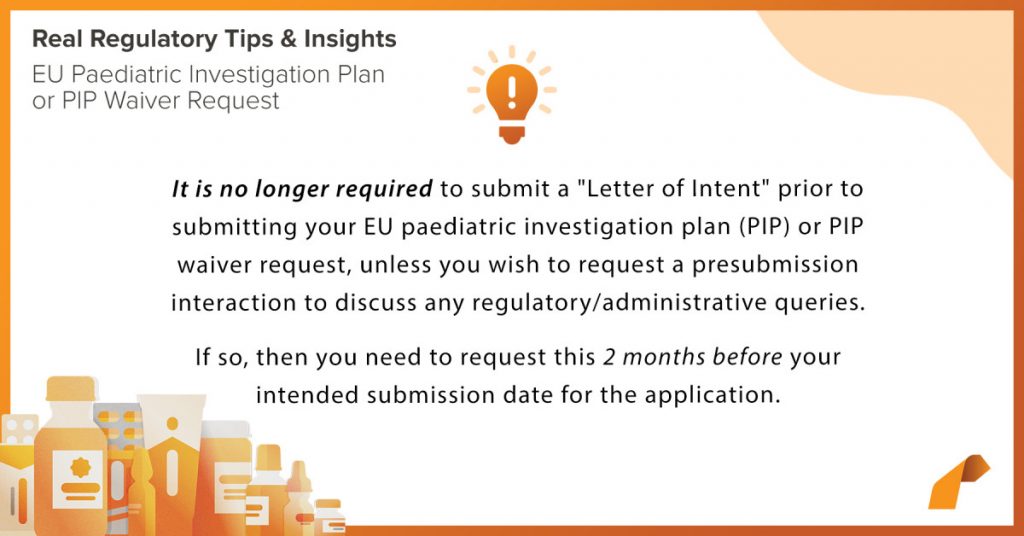
Implementation Date and Type IA/IAIN Variations
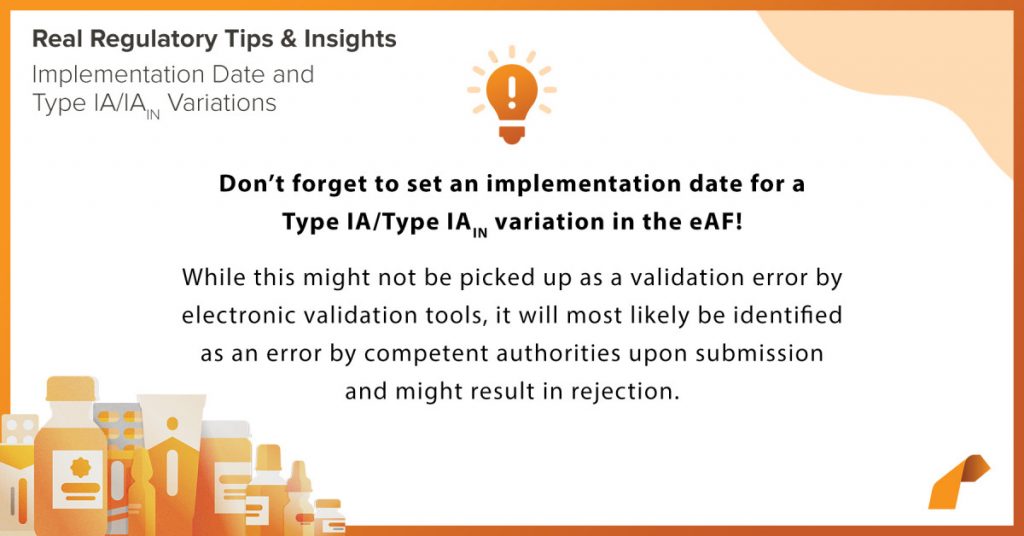
Last week’s round-up;
03-07 August 2020
Common excipients more active than thought
Common ‘inactive’ excipients may be more active than currently thought. Using a combination of computer modelling and lab testing, researchers investigated 639 excipients in the FDA’s Inactive Ingredient Database, screening them against thousands of potential human targets. Overall, 38 excipients were identified as having 134 activities against 44 physiologically relevant targets. Half of these activities were more potent than the on-target activity of some small-molecule drugs. In further testing, seven of these excipients were orally dosed in rats and systemic exposure was assessed. Two of these – cetylpyridinium chloride and thimerosal – reached sufficient concentrations to theoretically modulate their target: https://bit.ly/RealCMC-3gCvyIt
CMDh meeting report – July 2020
A report from the CMDh meeting held in July 2020 has been published. Some of the topics covered during the meeting include: • Brexit • EMA review of dexamethasone for treating COVID-19 • Update on nitrosamines in medicines and medicines containing metformin • Recommendations on common regulatory approaches for allergen products • Update of the RMS Day 70 and Day 120 overview assessment report templates and new RMS similarity assessment report template • Update of examples for acceptable and not acceptable groupings for MRP/DCP products • Questions and Answers on QP declaration • An overview of new applications, variations and renewals related to MRP/DCP that were submitted or finalised during June 2020.
The full CMDh report may be viewed at the following link: https://bit.ly/RealCMC-3gDgIBq
EC releases checklists for reusable and re-sterilisable Medical Devices
The EC released the Compliance and Enforcement Group (COEN) document COEN Working Group -2014 V1.0 on the 28th July 2020. The document includes checklists “Instruction for Use (IFU)” based on EN ISO 17664 & checklist “Assessment of the Validation” based on EN ISO 14937 in Annex 1 and Annex 2 of the document respectively. Checklist “Instruction for Use (IFU)” provides a quick and reliable way to assess IFU in view of making an informed decision on using or purchasing a specific re-sterilisable medical device (RMD). Checklist “Assessment of the Validation” of RMD’s is primarily for manufacturers of Class I devices and allows them to see the criteria adopted by CA for the assessment of validation.
The checklists can be accessed via this link: https://bit.ly/RealRegulatory-3gzuogC
Ph. Eur. Supplement 10.3 – CEP Updates
Ph.Eur. Supplement 10.3 is available and includes a list of substances covered by a CEP and for which a revised monograph will be implemented on the 1st January 2021. CEP holders are invited to update their applications according to the revised monographs. Further information and the list of substances with a revised monograph may be viewed at the following link: https://bit.ly/RealCMC-3i3l4Cb
Recommendations on common regulatory approaches for allergen products
The CMDh has issued guidance for harmonising regulation of medicinal allergen products across the EU, as they are currently authorised and distributed on different legal bases across member states.
https://bit.ly/RealRegulatory-31eKlCF
Butylparaben to be phased out
Butylparaben, a chemical used in pharmaceuticals, cosmetics and personal care products, has been added to the Candidate List of substances of very high concern (SVHCs) and will gradually be phased out due to its endocrine-disrupting properties. The Candidate List includes substances of very high concern that may have serious effects on our health or environment, and which will eventually be phased out. Companies that have a substance on the list may have certain legal obligations to fulfil. As of January 2021, companies are obliged to notify products containing SVHCs to the European Chemicals Agency’s (ECHA) upcoming SCIP database on substances of concern in articles and products.
https://bit.ly/RealCMC-31b9K01
(more…)
Last week’s round-up;
27 -31 July 2020
Country-specific requirements update for MRP/DCP variations and/or renewals
The CMDh has revised its “Data requested for Variations and/or Renewal Applications in the MRP/DCP which are not stated in the current EU legislation and/or in Volume 2B, Presentation and format of the dossier Common Technical Document (CTD) and/or in the EEA approved Guidelines/ Recommendation papers” document. Croatia has now been removed from the list, which indicates that Croatia does not have any country-specific requirements for Variations and/or Renewal Applications related to the MRP/DCP.
https://bit.ly/RealCMC-2Pf1XIM
Updated Services Section
We have updated the Services section of our website. Do have a look!
Our experienced and dedicated consultants can help you no matter what phase of development.
Chat to us today: https://www.realregulatory.com/services//
Revision of Ph.Eur. Sieve Test
A revised Ph. Eur. Chapter 2.9.12 Sieve Test has been published in Pharmeuropa 32.4. The chapter was revised in response to comments received to a previous proposed revision of the chapter that was released in Pharmeuropa 20.4 and 22.4. The chapter was previously revised to adapt it to the newer harmonized general chapter 2.9.35 Powder fineness, which provides a classification of powders according to their degree of fineness.
https://pharmeuropa.edqm.eu/internal/ec884bbe9cd54f27aa8b53911cd6ace4/phpa/issue32-4/page/20912E.pdf
EDQM Clarification on revision of CEP applications
The EDQM has issued some clarifications on the revised ‘Guideline on requirements for revision/renewal of certificates of suitability to the European Pharmacopoeia Monographs’, which was introduced in January 2019. In the announcement the EDQM provides clarifications on several situations involving the revision/renewals of CEPs, including:
· When a new substantially different route of synthesis is introduced.
· Where different grades of material with different specifications are involved.
· Misclassification of minor/major revisions by CEP holders.
https://bit.ly/RealCMC-3jFXRYi
EMA requirements for the qualification and validation of computerised systems for CT data.
EMA published a notice for clinical trial sponsors to highlight the requirements for the qualification and validation of computerised systems used for managing clinical trial data. This is based on inspection findings and based on the implications on the integrity, reliability, robustness and acceptability of data in future MAAs.
EMA has also updated associated questions 8 and 9 on their Q&A, which can be found here: https://lnkd.in/gjrgWM7
CMDh Q&A – QP Declaration Update
The CMDh has revised its QP Declaration Q&A guidance. The document includes an update to guidance on QP declaration requirements in situations where a CEP or ASMF has two manufacturing sites but the MAH just wishes to approve one of the sites.
The updated document with tracked changes may be viewed at the following link: https://bit.ly/RealCMC-2X029Qw
(more…)
Last week’s round-up;
13-17 July 2020
New EMA opinion on nitrosamines
The CHMP has finalised its opinion on the presences of nitrosamines in human medicines, which is available on the EMA’s nitrosamine impurities website. The opinion requires pharmaceutical companies to take measures in order to limit as much as possible the presence of nitrosamines in their drug products and to ensure that the levels of these impurities do not exceed set limits. Such measures include the implementation of appropriate control strategies to prevent or limit the presence of nitrosamines as well as the improvement of manufacturing processes, where necessary. Companies will also be required to carry out the necessary risk assessments and evaluation and conduct appropriate tests if the risk of nitrosamine contamination is identified.
https://bit.ly/RealCMC-2ZzN0au
EU Notified Bodies designated under the EU MDR (2017/745)
There are currently 15 Notified Bodies(NB) designated under MDR with GMED France being the latest NB to be designated and also the first NB to receive designation in France. A full list of NB’s currently designated are listed below and on the Nando Database linked here https://bit.ly/39aaypy.
Manufacturers don’t know for certain if and when their NB will be designated and are advised to regularly check the Nando database to see status of NBs designate.
-
-
- BSI (Netherlands) – 2797 (MDR scope)
- BSI (UK) – 0086 (MDR scope)
- CE Certiso (Hungary) – 2409 (MDR scope)
- DARE!!! Services (Netherlands) – 1912 (MDR scope)
- DEKRA Certification (Germany) – 0124 (MDR scope)
- DEKRA Certification (Netherlands) – 0344 (MDR scope)
- DNV GL Presafe (Norway) – 2460 (MDR scope)
- GMED (France) – 0459 (MDR scope)
- IMQ (Italy) – 0051 (MDR scope)
- Intertek IMNB (Sweden) – 2862 (MDR scope)
- MDC Medical Device Certification (Germany) – 0483 (MDR scope)
- MEDCERT (Germany) – 0482 (MDR scope)
- NSAI (Ireland) – 0050 – (MDR scope)
- TÜV Rheinland LGA (Germany) – 0197 (MDR scope)
- TÜV SÜD (Germany) – 0123 (MDR scope)
CMDh updates
The CMDh has revised the following documents (available with tracked changes): • Flow chart of the Decentralised Procedure. • CMDh Best Practice Guide on the processing of renewals in the Mutual Recognition and Decentralised Procedures. • CMDh Best Practice Guide on Multilingual Packaging. CMDh has also published its Procedural guidance during Covid-19 pandemic, which includes a new template for notification of implementation of a change under a previously agreed ECMP.
https://bit.ly/RealCMC-2DHSfw8
MHRA COVID-19 Flexibilities
MHRA is offering to provide temporary inspection flexibility for manufacturers of human plasma-derived medicines, in exceptional circumstances. For 3rd country plasma collection sites that have been previously inspected by MHRA, they will implement a control measure in line with EMA recommendations and a Statement of Next Inspection (SONI) will be issued. For 3rd country sites that have not been previously inspected, MHRA gives 2 separate options depending on whether a partent company has been previously inspected or not. Full details of the guidance and all the MHRA COVID-19 Flexibilities can be found here: https://lnkd.in/dduB8EB
EDQM evaluation of impurity found in paracetamol API
The EDQM is actively working with a pharmaceutical company and other stakeholders to evaluate the detection of 4-chloroaniline, a carcinogenic impurity found in the active substance paracetamol that is manufactured by the company. The company concerned holds a Certificate of Suitability (CEP) for this active substance. The evaluation is underway to better understand the potential impact of this impurity as well as the extent of the issue.
https://bit.ly/RealCMC-3h9usnx
Brexit: Joint technical notice by the European Commission, EMA and HMA
EC, EMA and HMA have announced that, since ‘The Withdrawal Agreement’ provides for a transition period end 31st Dec 2020 and no extension was requested as of 1st July 2020, there is no possibility of further extension beyond that date. Sponsors of EU CTs are reminded of the legal situation applicable after the end of the transition. Two specified areas that must be implemented prior to end of transition period are as follows; EU based QP will be required for IMP release and the sponsor or legal representative for the trial must be established within the EU. Further discussion can be found here: https://lnkd.in/dd2XgPt
New metformin recalls
Following last month’s voluntary recall of extended-release (ER) metformin by five pharmaceutical companies from the US market, the FDA has announced that another two manufacturers have issued further recalls of ER-metformin due to the presence of elevated levels of the potential carcinogen NDMA. Six pharmaceutical companies have been affected by the voluntary recalls. The FDA has also published a paper on the investigations carried out to study the initial discrepancies between FDA testing and testing by a private laboratory. The private laboratory, which had filed a Citizen Petition, reported higher NDMA levels in more metformin products than the FDA test results. On investigation, the cause of the discrepancy was found to be the presence of another chemical, N,N-dimethylformamide (DMF), that interfered with NDMA mass spectrometry measurements in the analytical methods used by the FDA. Further information on the latest ER-metformin recalls may be found here: https://bit.ly/RealCMC-3fogQ7n
(more…)
Last weeks round-up; 6 – 10 January 2020
EMA CMDH CLARIFIES THE PROOF OF GMP COMPLIANCE REQUIRED FOR US MANUFACTURING SITES
CMDh has amended the Q&A on the impact of EU-USA Mutual Recognition Agreement on marketing authorisation applications and relevant variations. In particular, Q1 has been changed in relation to the documentation to be submitted in EU as proof of GMP compliance for US manufacturing sites that have been previously inspected by US FDA. Further information can be found under this link https://lnkd.in/dyj7ZJu
LAUNCH OF INTERNATIONAL PILOT PROGRAMME ON INSPECTION OF MANUFACTURERS OF STERILE MEDICINES
On the 17th of December, the EMA announced the launch of a pilot programme which would see cooperation between European and International partners of the EMA in the inspection of sterile medical device manufacturers. This programme would improve oversight of manufacturers as well as reduce the likelihood of duplicate of inspections. For further information, please see the following link: http://bit.ly/2FojYzB





